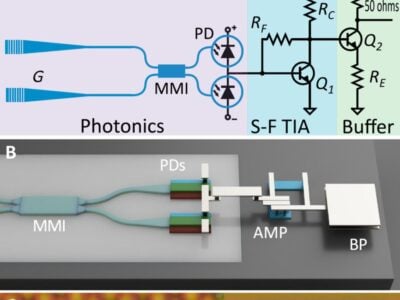
Researchers advance porous dielectric for better chips
The team has received a European Research Council grant to further their research, which could allow for denser and lower power consuming chips. By reducing the dielectric constant of the insulating material the capacitance between interconnect wires and hence power consumption are reduced.
“We’re using metal-organic frameworks (MOFs) as the insulating substance. These are materials that consist of metal ions and organic molecules. Together, they form a crystal that is porous yet sturdy,” said Professor Rob Ameloot of KU Leuven, in a statement.
For many years silicon dioxide has been used a standard interlayer dielectric material but as ICs move to the nanometer-scale materials start to exhibit non-bulk properties and quantum effects. A vacuum gap or gas-filled gap may provide a superior insulator and porous materials are one way to provide that.
A research team from across KU Leuven and IMEC has applied metal-organic framework (MOF) insulation using chemical vapor deposition as part of semiconductor manufacturing process. “First, we place an oxide film on the surface. Then, we let it react with vapor of the organic material. This reaction causes the material to expand, forming the nanoporous crystals,” said postdoctoral researcher Mikhail Krishtab. “You can compare it to a soufflé that puffs up in the oven and becomes very light. The MOF material forms a porous structure that fills all the gaps between the conductors. That’s how we know the insulation is complete and homogeneous. With other, top-down methods, there’s always still the risk of small gaps in the insulation.”
There is still work to do make MOF ready for commercial production. At present the surface of the nanoporous material is irregular. A way of smoothing the material without collapsing the underlying structure needs to be found to allow integration of MOF in multiple layers.
The study Vapor-deposited zeolitic imidazolate frameworks as gap-filling ultra-low-k dielectrics was published in Nature Communications.
Related links and articles:
News articles:
Phosphorous tipped as 2D 5nm transistor material
Graphene, porous copper startups merge
IMEC makes spin-orbit torque MRAM on 300mm silicon
 If you enjoyed this article, you will like the following ones: don't miss them by subscribing to :
eeNews on Google News
If you enjoyed this article, you will like the following ones: don't miss them by subscribing to :
eeNews on Google News




